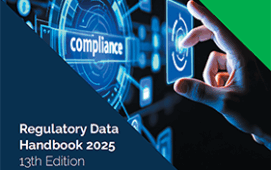The Derivatives Service Bureau (DSB) set up to issue ISINs for OTC derivatives under MiFID II has published a report covering functional changes that will be made based on industry feedback to a second industry consultation that opened at the end of June 2018 and closed a month later. The final consultation report also notes industry interest in additional use cases for ISINs.
The consultation asked industry members to consider revision of DSB user categories and the fee model; changes to DSB functionality; service levels; and access and user agreements. The consultation questions were shared with DSB’s 373 user organisations as well as with subscribers to DSB updates, trade associations and other interested parties. Fifteen responses from 19 entities were received by the DSB, predominantly from paying users of its services.
Emma Kalliomaki, managing director of the DSB and its parent the Association of National Numbering Agencies (ANNA), comments: “We are listening intently to industry opinion, and for the most part, sentiment has shifted to exploring how to move forward with additional use cases to bring more ISIN efficiency to the industry.”
The consultation report notes that current user categories – power users with programmatic connectivity that pay fees, registered users that receive a free service, and infrequent users and standard users that receive free GUI connectivity – will remain the same, reflecting industry feedback.
Based on industry consensus that users should continue to pay the DSB on the basis of their use of its services and infrastructure, and that the fee model should continue to be based on total message impact on the DSB instead of a move towards ISIN creation metrics, the report states that the DSB will ‘work with industry in 2019 to review and agree the way forward to determine an appropriate fee model’. It will also review the user agreement to allow users to make a single agreement with the DSB covering multiple user categories.
In terms of functionality and taking into account industry responses to consultation questions covering whether the DSB should create a user forum, proceed with dynamic enumerations, and implement proposed monthly metadata reports, the report notes that a user forum will not be created as a product committee and technical advisory committee are already in place.
On facilitating dynamic enumerations, the DSB, which is financed on a cost recovery basis, will proceed at a build cost of €500,000 to €750,000 depending on implementation details. The cost will be amortised over a four-year period, but will have an impact of €125,000 to €187,5000 per year and equate to a 1.4% to 2.0% increase on the 2018 cost base. It will also proceed with the provision of specific metadata.
Industry responses to questions about operations and service levels resulted in the DSB reporting that it will investigate the expansion of the product committee, most probably to allow trade associations to be represented, before the end of 2018. Malavika Solanki, a member of the DSB management team, says: “There will be some changes to the operating model of the product committee and its size, which will make it easier to engage with the DSB and discuss how we can work together with the industry to find solutions that will benefit the market as a whole.”
In line with increased support services approved by a meeting of the technical advisory committee, from 1 January 2019, the DSB will remain operational on all holidays, increase availability hours from 24×6 to 24×6.5, improve email response times for power users, instigate an on call rota for technical support during unavailability hours, move to a monthly release schedule for all BAU functionality, and publish monthly support statistics.
These changes also carry costs, with the DSB envisioning an additional running cost of €382,000 a year that will equate to a 4.2% increase on the 2018 cost base.
In conjunction with the consultation report, the DSB published a draft user agreement and associated policies. Comments on the draft must be submitted in the next couple of weeks before a final version of the agreement is published on 20 September 2018. Final costs for DSB services in 2019, based on 2018 charges, as well as per user fees and numbers of users will be made available on 5 December 2018.
Subscribe to our newsletter




